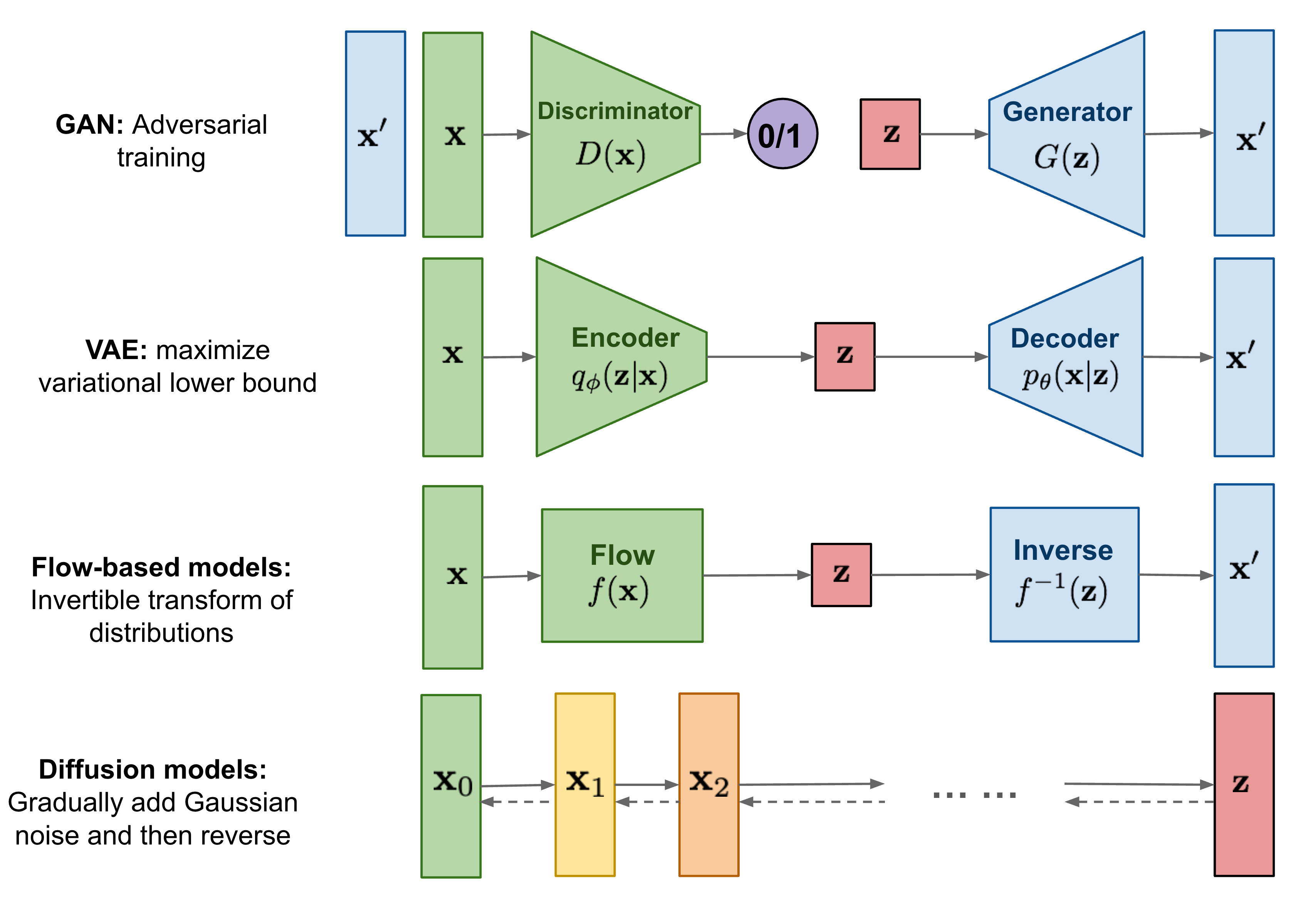Generative Model
You have GANs and Diffusion Model that can generate data. There’s also GPT-3.
Types of generative models (source):
- Likelihood-based models: approximate the probability distribution . Ex:
- Implicit / Score-Based Models: do not model explicitly, or use alternative objectives to generate samples. Ex:
- Generative Adversarial Network (GAN):
- Diffusion Models: .
- Energy-Based Model (EBM):
I still don't fully get the difference....?
It’s not about starting from noise and then denoisinig.
What is
p(x)?
- is the probability density (or mass) of a data point under your model.
- It tells you how likely your model thinks that is.
Does this matter anymore?
Like just slap a transformer and feed data, does this really matter? The architecture is becoming standardized (transformers), but the generative modeling paradigm — diffusion vs autoregressive vs GAN — still shapes what the model does and how it learns.
https://lilianweng.github.io/posts/2021-07-11-diffusion-models/ https://yang-song.net/blog/2021/score/

- From lilian wag’s blog, it seems that all of these are really similar.
Generative Video Models
Do generative video models understand physics?
- https://arxiv.org/pdf/2501.09038 this paper proves NO
It’s just learning to correlate frames, but it has no understanding of the world’s physics.